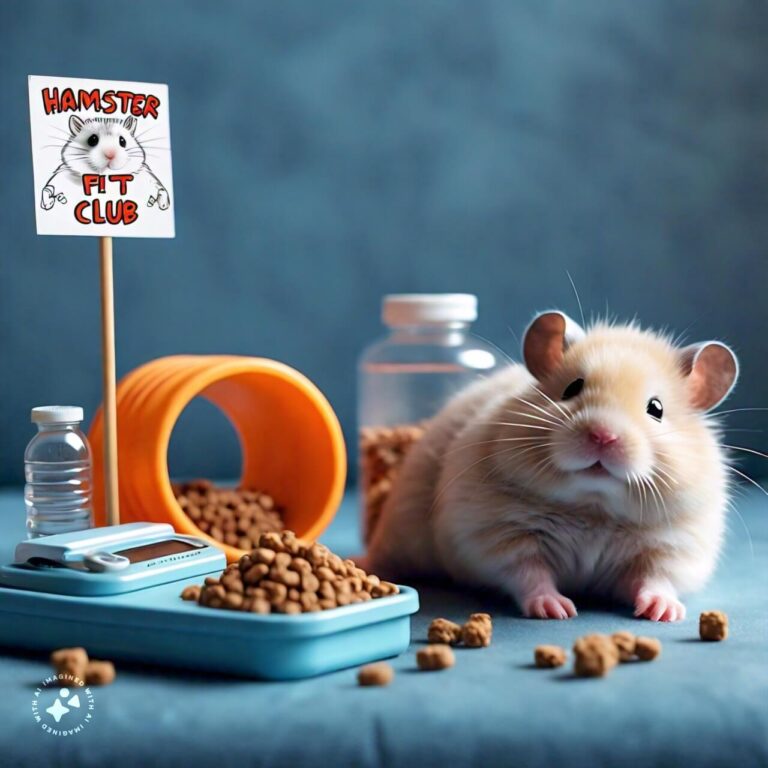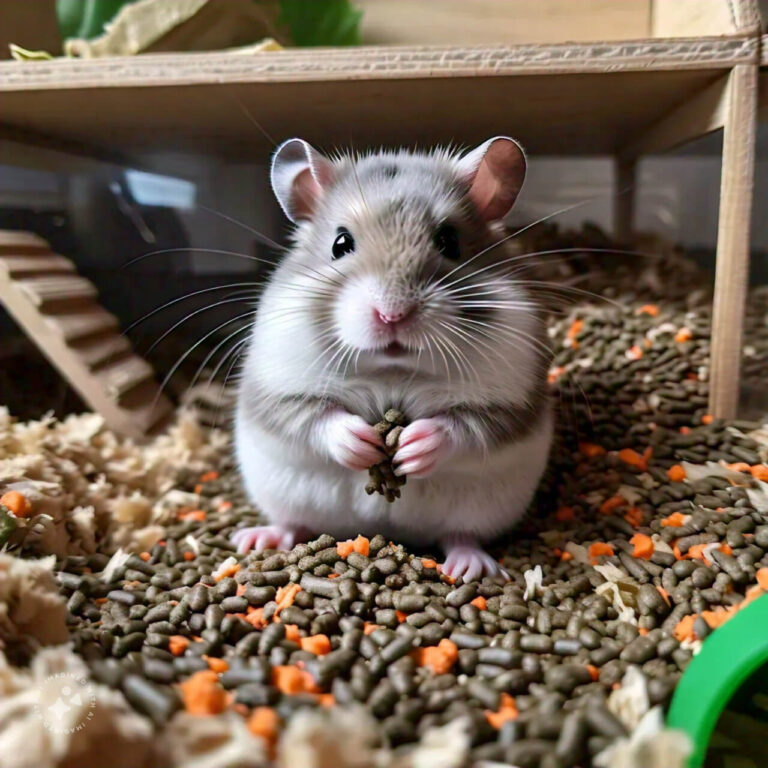Why My Hamsters Bottom Swollen – hamsters.pk
Understanding Common Causes of Swelling in Hamster’s Bottom
Swelling in the bottom of a hamster can be a concerning symptom for any pet owner. This condition can be caused by a variety of health issues, ranging from infections to tumors. Understanding the potential causes can help you quickly address the issue with appropriate veterinary care.
Identifying the Symptoms
Before diving into the causes, it’s important to identify the associated symptoms that often accompany swelling. These may include visible lumps, redness, or discharge around the affected area. Your hamster might also show signs of discomfort, such as difficulty walking, loss of appetite, or lethargy.
Common Health Issues Leading to Swelling
Infections: Abscesses or infections in the anal glands or nearby tissues are common reasons for swelling. These infections can result from unclean living conditions, injuries, or even complications from fecal impaction.
Impaction: Fecal impaction occurs when hardened feces get stuck in the intestine or near the anus, causing swelling and discomfort. This condition is more common in older hamsters or those on a low-fiber diet.
Cysts and Tumors: Cysts or tumors can develop near or around the hamster’s bottom, leading to noticeable swelling. Some tumors may be benign, while others could be malignant, necessitating prompt veterinary evaluation.
Parasites: External parasites like mites and internal parasites can cause swelling and other symptoms in the anal area.
Diagnosing the Exact Cause
A veterinarian will typically start with a physical examination of your hamster to observe the swelling and check for other symptoms. They might also recommend diagnostic tests such as X-rays or a biopsy to determine the underlying cause of the swelling.
Immediate Steps to Take
If you notice any swelling in your hamster’s bottom, it’s crucial to maintain cleanliness in their habitat and consult a vet as soon as possible. Early diagnosis and treatment can prevent complications and improve your hamster’s chances for a full recovery.
In summary, swelling in a hamster’s bottom can be due to a variety of health issues. It’s important to observe any accompanying symptoms and seek veterinary care promptly to address the problem effectively.
Symptoms to Watch: Identifying Swollen Bottom Issues in Hamsters
Hamsters are small, generally robust animals, but like any pet, they can experience health issues. A swollen bottom in hamsters can be a sign of several health problems, some of which require immediate attention. Understanding the symptoms and possible causes can help hamster owners seek timely medical treatment for their pets.
Recognizing the Symptoms
The first step in addressing health issues in your hamster is recognizing the symptoms. Swelling around the bottom can be noticeable and should prompt further observation. Look for these signs:
- Increased size or puffiness around the anal or genital area.
- Redness or discoloration, which may indicate irritation or infection.
- Hair loss near the swollen area, often due to excessive grooming or the hamster trying to alleviate discomfort.
- Visible discomfort or pain when your hamster moves or when you handle it near the affected area.
- Changes in behavior, such as reduced activity levels, loss of appetite, or increased aggression, which can indicate pain or discomfort.
Possible Causes of Swelling
Swollen bottoms in hamsters can be caused by a variety of health issues. Some of the most common include:
- Infections: Bacterial or fungal infections can cause swelling and discomfort.
- Impaction: Older male hamsters can suffer from impaction in their scent glands near their bottom, leading to swelling.
- Abscesses or Tumors: These can develop near the anal area and lead to visible swelling.
- Parasites: External parasites can cause irritation and swelling in the affected area.
When to See a Veterinarian
If you notice any of the above symptoms, it is crucial to consult with a veterinarian who specializes in small animals or exotics. Early diagnosis and treatment can prevent complications and improve your hamster’s prognosis. Be prepared to provide detailed information about your hamster’s symptoms, diet, and any recent changes in behavior or environment.
Conclusion
Monitoring your hamster regularly for any signs of health issues, including a swollen bottom, is key to ensuring their well-being. By understanding and promptly addressing these symptoms, you can help maintain your hamster’s health and provide them with a happy, comfortable life.
Treatment Options for Swollen Bottom in Hamsters
When your hamster exhibits swelling around its bottom, it’s crucial to understand the appropriate treatment options to ensure their health and comfort. This article delves into the various methods to treat this condition, from home remedies to professional veterinary care.
Identifying the Cause
Before any treatment can begin, it’s important to identify the cause of the swelling. Common reasons might include impaction, infection, tumors, or cysts. A correct diagnosis from a veterinarian is essential, as the treatment will vary depending on the underlying issue.
Home Care Solutions
For minor swelling, there are several steps you can take at home to provide relief:
- Keep the Cage Clean: Ensure your hamster’s living environment is clean and free from contaminants that could cause or exacerbate infections.
- Warm Compress: Applying a warm compress can help reduce swelling and discomfort. Ensure the compress is not too hot to avoid burning your hamster’s sensitive skin.
- Monitor Diet: Sometimes, dietary issues contribute to health problems. Ensure your hamster is eating a balanced diet appropriate for their species.
Veterinary Treatments
For more serious conditions, professional veterinary care is necessary:
- Antibiotics: If the swelling is due to an infection, your vet may prescribe antibiotics to combat the bacteria.
- Surgery: In cases of tumors, cysts, or severe impaction, surgical intervention might be required to resolve the issue.
- Specialized Medications: Depending on the diagnosis, your vet might also recommend specific medications to treat pain or other underlying conditions.
Ongoing Care and Monitoring
After treatment, continuous monitoring of your hamster’s condition is crucial. Watch for signs of recovery or any worsening of symptoms, and maintain regular veterinary check-ups to ensure long-term health. Adjustments to their habitat and diet might also be recommended by your vet to prevent future issues.
Understanding these treatment options and when to seek professional help is key to managing a swollen bottom in hamsters. Always prioritize your pet’s comfort and health, and consult with a veterinarian if you notice any signs of distress or illness.
Preventive Measures to Keep Your Hamster Healthy and Swelling-Free
Hamsters are small and generally hearty pets, but they can be susceptible to various health issues, including swelling in different parts of their bodies. Preventing these issues involves careful attention to their living environment, diet, and general care. This article explores key strategies to keep your hamster healthy and free from swelling.
Regular Cleaning of the Cage
One of the most important steps in keeping your hamster healthy is maintaining a clean living environment. A dirty cage can lead to bacterial and fungal infections that might cause swelling and other health problems. Clean your hamster’s cage at least once a week, replace bedding, and remove any waste or leftover food daily.
Proper Nutrition
A balanced diet is crucial for preventing health issues in hamsters. Ensure your hamster’s diet includes a variety of foods such as pellets, fresh fruits, and vegetables, which are all rich in nutrients and fibers. Avoid sugary and high-fat treats, which can contribute to obesity and related swellings such as fatty tumors.
Adequate Exercise
Hamsters need regular exercise to maintain their health and prevent issues like obesity, which can lead to swelling. Providing a running wheel and ensuring the cage has enough space for movement can help keep your hamster active. Consider setting up a safe play area outside the cage where your hamster can explore and exercise under supervision.
Regular Health Checks
Frequent checks are essential to catch any signs of swelling or illness early. Regularly inspect your hamster for any signs of distress, swelling, or changes in behavior. Consult with a veterinarian if you notice anything unusual. They can provide professional guidance and treatment if necessary.
Stress Reduction
Stress can adversely affect hamster health, leading to immune suppression and making them more susceptible to infections that could cause swelling. Minimize stress by keeping the cage in a quiet area, handling your hamster gently, and avoiding frequent changes in their environment.
By implementing these preventive measures, you can significantly reduce the risk of health issues in your hamster, keeping them healthy, happy, and swelling-free. Regular care and attention are key in ensuring the well-being of these delightful little pets.











